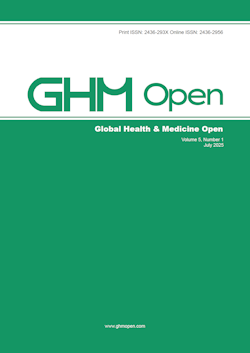Burden of cancer attributable to air pollution in Japan in 2015
Hori M, Katanoda K, Ueda K, Nakaya T, Saito E, Abe SK, Hirabayashi M, Matsuda T, Inoue M; the Cancer PAF Japan Collaborators
PM2.5 is a major environmental health problem and a risk factor for lung cancer. Exposure to PM2.5 has attracted growing public concern nationwide. Here, we aimed to estimate the cancer in 2015 attributable to PM2.5 in Japan. Ambient air pollution level due to excess concentration of PM2.5 was estimated using geophysically based satellite-derived PM2.5 concentrations in 2005, with a spatial resolution of 0.5° × 0.5° longitude-latitude, and population data presented in a 1 km by 1 km grid. We used the WHO guideline value for PM2.5 exposure (≤ 10 μg/m3) as the optimal level of PM2.5 exposure. By using relative risk from a large-scale cohort study in Japan, we estimated the population attributable fraction (PAF) for lung cancer, which is positively associated with PM2.5, and aggregated the results to obtain the PAF among total cancer incidence and mortality. Population-weighted mean PM2.5 level in 2005 was 14.9 μg/m3. Approximately 95.7% of the population was exposed to levels above the WHO guideline value. Lung cancer attributable to PM2.5 exposure corresponded to 11,922 cases and 7,264 deaths, which accounted for 9.7% and 9.8% of total lung cancer incidence and mortality, respectively, and 1.2% and 2.0% of total cancer incidence and mortality, respectively. Substantial geographic variation in PM2.5-attributable incidence and mortality fractions was found, with cities in western Japan and metropolitan areas having a higher PAF than other municipalities. This study provides useful information to aid policy-makers and public health agencies in the efficient establishment of environmental cancer prevention policies.







